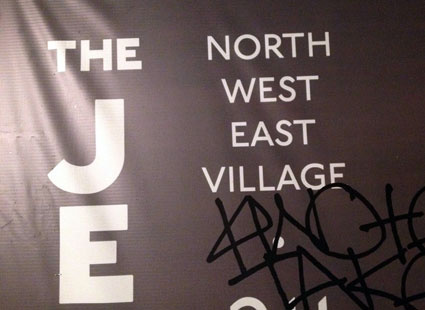Kristina’s War Story: Trampoline Spies

Kristina Lustig is a researcher at Stack Overflow, and is currently based in London. She told this story live at User Research London. Update: the video is here.
Last year, I was in Bangkok with eight members of my product team. For our research, we planned to speak with people who we saw taking videos with their smart phones. We split into a few groups, each with their own interpreters. My group tried – and failed – to find people at an open-air market or around a couple of malls before we got the idea to look for parents taking videos of their children. Our interpreter, Kay, in a flash of genius, suggested that we’d probably see a lot of this behavior at a trampoline park, so off we went.
After riding several long thin escalators far into the interior of an extremely large mall, we arrived at the trampoline park and bought our tickets. Before we went in, we put on the mandatory lime green sticky socks and neon pink wristbands.
Now, I’ve done a good bit of international research in questionable situations, but at this point, this was the strangest research situation I’d been in. Let me paint the picture for you: two white people in business casual with neon pink wristbands and lime green sticky socks, holding notebooks, accompanied by our Thai interpreter, all wandering through a trampoline park full of Thai parents and children. On the 700th floor of an upscale mall on a Wednesday morning.
But really, it was also a research goldmine! We found many mothers with their smart phones out, filming their children. We spent about 30 minutes chatting as casually as possible with a few different women. We learned a lot about how they shared videos on social media. Then we were approached by a trampoline park employee. She began speaking with Kay, and although we couldn’t understand a word, we watched as Kay moved from confident to concerned and finally to incredulous.
As Kay translated for us, the employee was concerned that we could be spies from a rival trampoline park, or that we were we attempting to sell these women passes to a rival trampoline park!
Kay explained to the trampoline park employee that we were from a big company in the US and that we weren’t selling anything, but she didn’t believe us. We gave her our business cards (with potentially impressive or reassuring titles like “UX Researcher” and “Product Designer”) but no dice. She started to kick us out of the trampoline park, but in a last ditch effort, we asked “Well, can we just… stay and jump?”
So, we didn’t get to do too much research, but we did spend a lot of time bouncing around under that employee’s watchful anti-research eye. We observed as much as we could, while bouncing. In retrospect, we probably should have cleared our research with the trampoline park beforehand…but any research endeavor that starts with intercepts and ends with extreme trampolining is a win in my book.










































































































